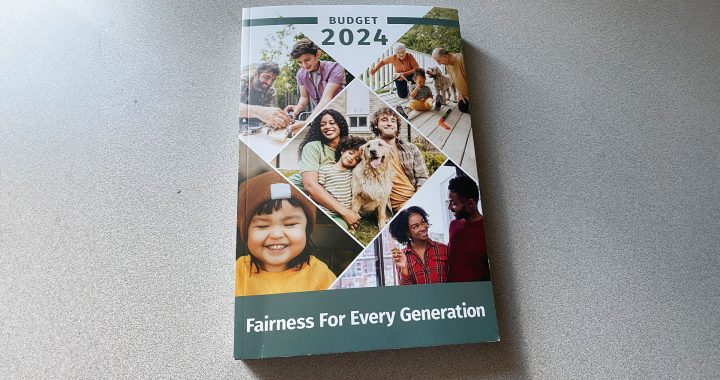Aboriginal Affairs “unable” to do job, faces “high risk” of deteriorating relationship with FN: Documents
Facing rising legal costs, cuts to its budget, a booming Indigenous population and the federal Aboriginal Affairs department faces a “high risk” of a deteriorating relationship with First Nations that could lead to increased protests and potentially “violence,” internal department documents show.
By Jorge Barrera
APTN National News
Facing rising legal costs, cuts to its budget, a booming Indigenous population and a rights-based opposition, the federal Aboriginal Affairs department faces a “high risk” of a deteriorating relationship with First Nations that could lead to increased protests and “violence,” internal department documents show.
The documents were obtained by Shiri Pasternak, a post-doctoral fellow at Columbia University in New York City, and provided to APTN National News.
Aboriginal Affairs Minister Bernard Valcourt’s office did not provide a response to the content of the documents as of this article’s posting.
Called Corporate Risk Profiles, the documents, ranging from 2011 to 2013, reveal a bleak picture of Aboriginal Affairs and depict a department on the brink of crisis, struggling to make ends meet as a result of government-wide cuts while facing increasing demands on its dwindling resources.
The documents show that First Nations, despite limited financial resources, are drawing blood in their repeated legal, rights-based assaults on Ottawa. The documents also reveal that the current government’s policy direction is alienating First Nations and leading to increased tensions.
“As the Aboriginal population grows, the demand for services also increases and (the department) is unable to respond. Funding cuts will make it more difficult to respond to Aboriginal needs,” according to the department’s Corporate Risk Profile from 2011. “As (First Nations) become impatient with outcomes, they often move disputes into the courts in order to increase the pace of resolution. Courts increasingly ruling that the federal government is not living up to the ‘Honour of the Crown’ obligations.”
The same observation appeared in 2012.
“Growth in the Aboriginal population outpaces (the department’s) funding growth making it increasingly difficult to respond to the needs of Aboriginal communities and people,” said a draft listing of the department’s risks from June 20, 2012.
The observation was listed under the heading, “Risk 7: Aboriginal Relationship; (The department) will not build and sustain strong, productive and respectful relationships with Aboriginal people, communities and organizations to contribute to the delivery of its mandate.”
The list was based on input from the department’s director generals.
It notes that the Harper government’s position “vis-a-vis” the “rights-based agenda” and its willingness to “entertain reforms to the Indian Act” were “a source of frustration from some Aboriginal stakeholders.”
In an updated draft version of the 2012 risk list, under the heading, Aboriginal Relationship Risk, the department notes, “Aboriginal people, communities, organizations and governments remain frustrated with some of Canada’s positions on Aboriginal issues (vulnerable communities, rights-based-agenda, treaty management, youth issues, reform of Indian Act, Bill C-38).”
Bill C-38, the 2012 omnibus budget bill, streamlined environmental regulations and removed federal oversight over a large number of waterways.
In a separate section titled Legal Risk, the document notes there is “tension” between the “rights-based agenda of Aboriginal groups” and the “non-rights based policy approaches grounded in improving socio-economic outcomes.”
The documents show that First Nation groups that seek to push Section 35 of the Constitution, which guarantees Aboriginal rights, have been wrecking havoc on the department, both costing it millions of dollars in legal fees and forcing it to change course as a result of successive court wins.
“Where (the department) is perceived as unresponsive or unwilling to adopt a rights-based agenda, FNs and other organizations increasingly turn to litigation,” according to the draft risk list. “The legal caseload is very heavy and fully consumes both legal and program/operations…. Court decisions can result in the need for (the department) to very quickly ‘change course’ which is very difficult in an environment where funding commitments are locked in through multi-year contribution agreements and contracts.”
Ottawa has faced rights-based court challenges over everything from education to resource extraction. Shortly after unveiling a “historic” agreement on education with the Assembly of First Nations (AFN), a Quebec organization, the Assembly of First Nations of Quebec and Labrador, launched a legal challenge against the federal government. Education is seen as a treaty right. Ottawa has also faced a litany of court challenges over Aboriginal rights and title linked to mining and energy projects. Many of these court challenges are based on Ottawa’s failure to consult.
The department admits that it faces an “ongoing challenge to align…programming with treaty rights,” according to its updated draft 2012 Corporate Risk Profile.
Many First Nations see their relationship with Canada defined through treaties, either signed with the British Crown, or, as in the case of the numbered treaties, with Ottawa.
The same risk profile also identifies the “increasing demands for consultation as development increases on and near reserves, within traditional use areas” as “emerging in 2012.”
The document notes that the potential consequences of these risks could lead to “actions, demonstrations, public protests, violence.” In one instance, the Idle No More movement, was listed and then crossed out as an example of these consequences.
The document also notes that “economic development projects will be delayed.”
Added to this, the documents show, budget cuts have also decreased the amount of personal contact department officials have with First Nation communities.
“Cuts to (the department’s) travel budget are limiting level of face to face contact with FN communities and stakeholders which may limit (the department’s) ability to fully understand and respond to Aboriginal issues/concerns and the ability to build and sustain relationship,” said the draft list of risks from June 2012.
The Corporate Risk Profile is a “point in time of summary” of the department’s most “significant strategic and operational risks.”
@JorgeBarrera









